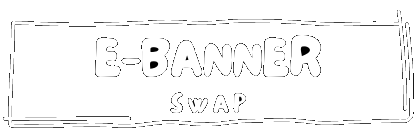Although there are now at least 5 different types of tow vehicles, the modern towing truck has come a long way since 1916, when a garage worker named Ernest Holmes was confronted with the problem of pulling a car out of a local creek. A creative thinker, Holmes and six other men used blocks and ropes to remove the car, and this led Holmes to design and create the trucks that still bear his name.
Boom Trucks
Although they are often used as towing trucks, boom trucks are not specifically designed for towing, and many of these trucks are also used as utility company bucket trucks and heavy-duty construction company vehicles. Those that are used for towing have an added adjustable boom winch that is used for recovering vehicles from culverts and ditches. These are also used in vehicle recovery in any area in which it would be unsafe for vehicle back up to, such as ledges or cliff facings where a vehicle may have crashed through highway guard-railings and gone over the side.

Hook and Chain
These were the most commonly-used towing trucks in the industry for many years, and are still in use, as they are safe for towing older vehicles. Unlike other tow vehicles that have hydraulic equipment to lift up the wheels of passenger cars and trucks, a hook and chain tow truck has a hook in the shape of the letter “J” (these are also referred to as “J-Hook tow trucks”) that is attached to an axle of the vehicle. Once the hook is attached, the tow operator cinches up the hook’s chain with a winch, and the front of the vehicle is lifted up onto its two front or back wheels onto a couple of rubber slings, when it can be safely towed.
Wheel-Lifts
This type of towing truck evolved out of the necessity to safely tow newer models of vehicles, whose non-metal bumpers, driving systems, and other components were sometimes damaged by hook and chain tows. These towing vehicles lift cars and trucks by either two wheels, or by all four, and the process is facilitated by a large, hollow, metal cradle that fits around the wheels. This cradle system is attached to metal “arms” that slide up under the vehicle and around the tires. These arms also have chains and bars for securing the vehicles. The operator then activates the lift that lifts up the vehicle and allows it to be towed.
Flatbeds/Rollbacks
This type of towing vehicle has the entire back of the towing truck outfitted with a flat bed which can be hydraulically inclined and/or moved to ground level. A passenger car or truck can then be driven onto the bed, or, for disabled or wrecked vehicles, power-winched up onto the flatbed. This process is done by a vehicle’s tow loops hooked to the flatbed’s winch chain. For vehicles without tow loops, the operator hooks the chain onto the frame or another sturdy part of the vehicle. Once winched or driven onto the bed, the flatbed is returned to level, and the vehicle is secured with additional chains before towing.
Integrated/Self-Loaders
These vehicles are often used by companies or individuals who specialize in repossessions, and are frequently referred to as “Snatchers” or “Repo Trucks.” They are light-duty trucks with the boom and wheel-lift combined into one unit, and these are also used to tow illegally-parked vehicles to impound yards. These trucks are equipped with vehicle controls inside the cab, so that a driver can quickly pick up a vehicle without getting out of the truck; facilitating rapid and safer repossessions and faster tow-aways. Additionally, there are flatbed/wheel-lift units, and a variety of other integrated recovery and/or towing vehicles.
What ever you service you need, from wrecker service to towing there are a lot of towing services to choose from, from cheap ones to very expensive ones, so do your research, don’t go with the first company you find. Towing trucks are most often operated by private companies, and are used for everything from emergency road service for passenger vehicles, to police and government impounds and repossessions.




